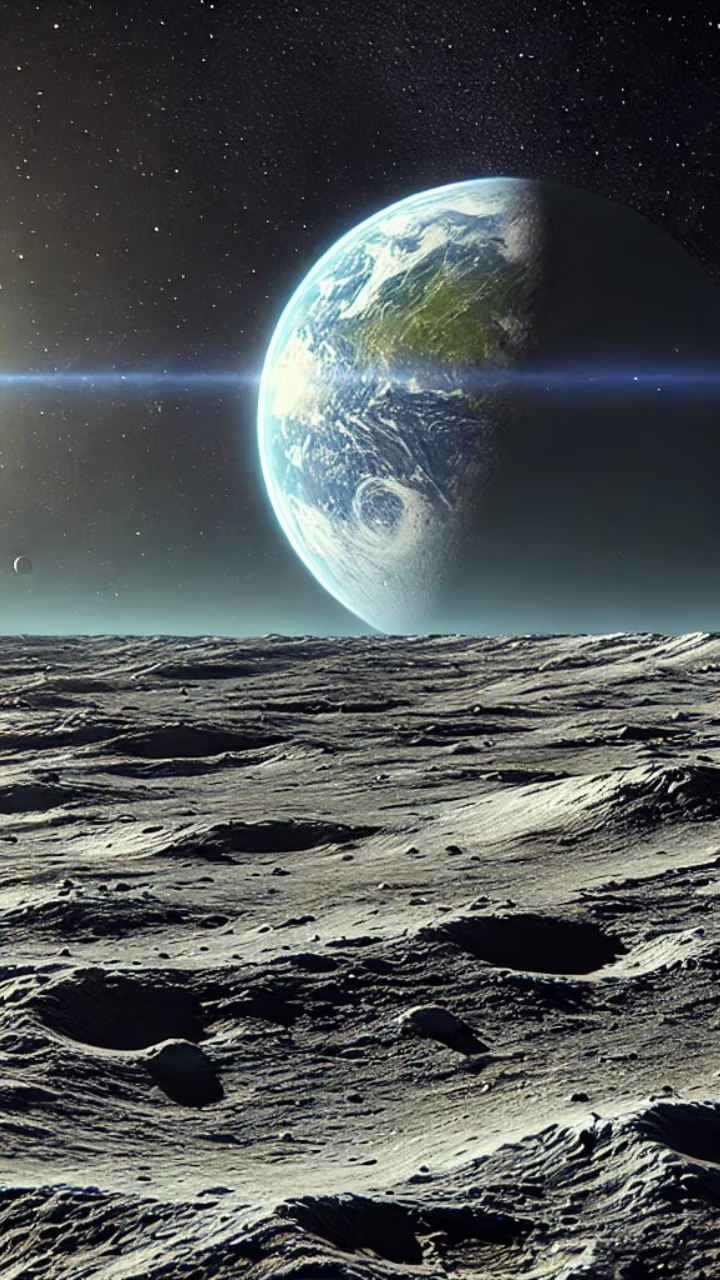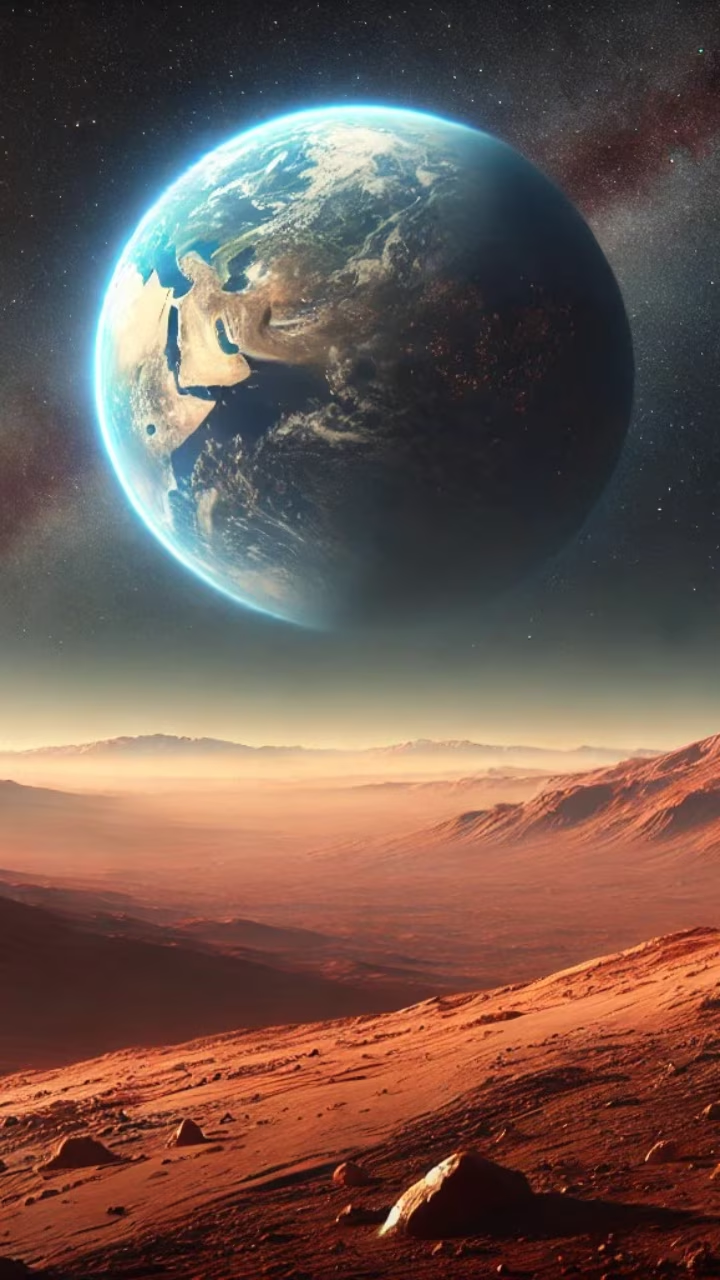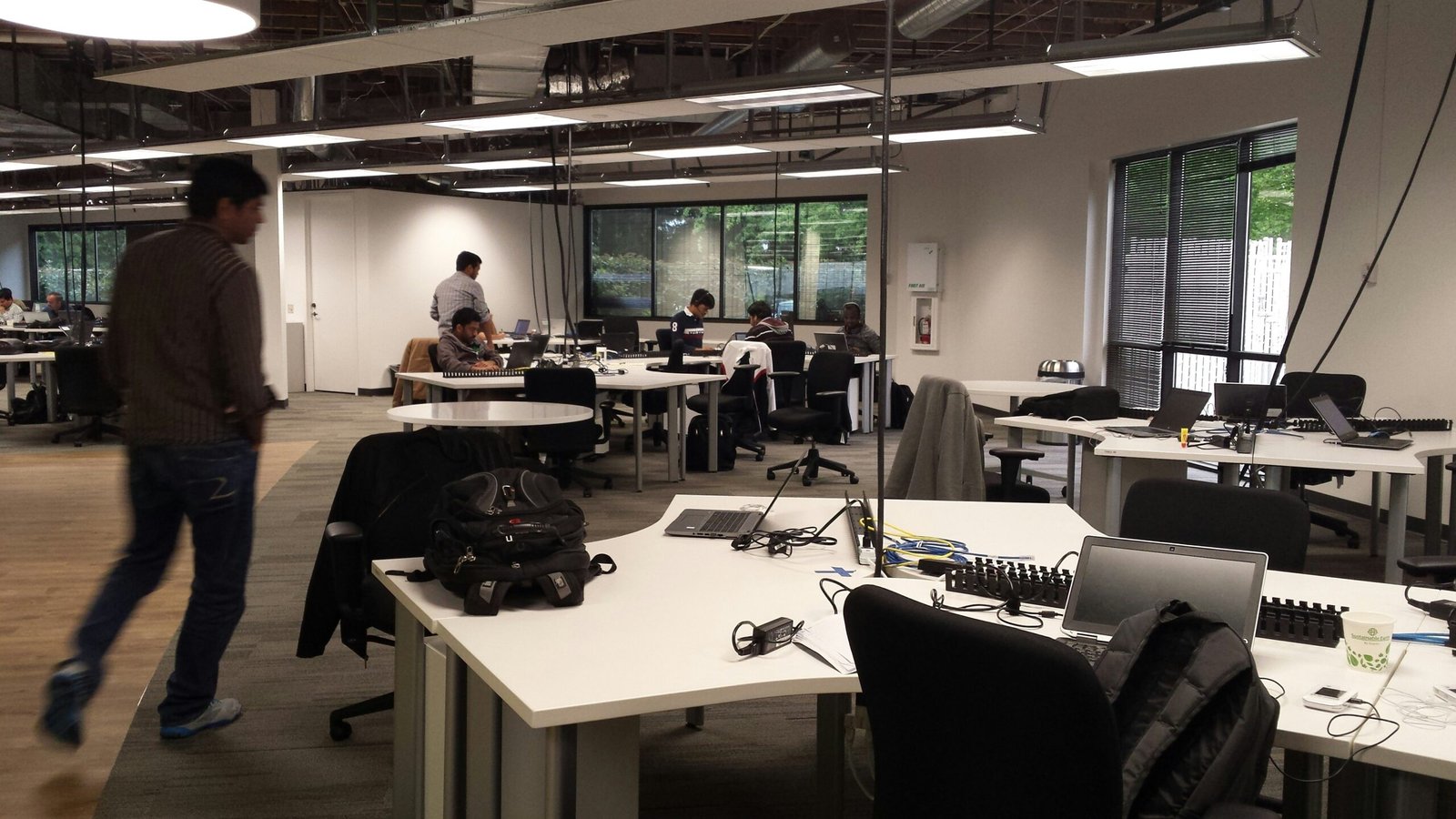AI-Generated Earth Images from Mars: Imagination or Expectation?

Introduction to AI-Generated Imagery
The realm of artificial intelligence (AI) has seen remarkable advancements in recent years, particularly in the field of image generation. At the core of this technological marvel are sophisticated machine learning models and neural networks. These systems are designed to learn from vast datasets, enabling them to generate highly realistic images that often rival those captured by traditional cameras. The technology behind AI-generated images typically involves Generative Adversarial Networks (GANs), which consist of two neural networks: a generator and a discriminator. The generator creates images while the discriminator evaluates them, pushing the generator to produce increasingly realistic results.
AI-generated imagery has found applications across a myriad of fields. In the entertainment industry, for instance, AI is utilized to create stunning visual effects and lifelike characters in movies and video games. In the medical field, AI-generated images assist in simulating complex anatomical structures, aiding in both education and surgical planning. Moreover, in the realm of fashion, AI designs innovative clothing patterns and visualizes them on virtual models. The significance of these advancements cannot be overstated, as they not only enhance creativity and efficiency but also open new avenues for exploration and innovation.
One particularly intriguing application of AI-generated imagery is its potential to visualize what Earth might look like from Mars. By analyzing data from space missions and leveraging advanced AI algorithms, scientists can produce images that offer a glimpse of our planet from the perspective of its neighboring celestial body. This capability not only fuels our imagination but also serves as a valuable tool for educational and scientific purposes. The intersection of AI and space exploration holds promise for even more groundbreaking discoveries, making the field of AI-generated imagery an exciting frontier with limitless possibilities.
The Origins of AI-Generated Earth Images from Mars
The inception of AI-generated Earth images from Mars traces back to a collaborative initiative involving multiple organizations at the forefront of space exploration and artificial intelligence. This ambitious project was primarily motivated by the desire to enhance our understanding of both planets by leveraging advanced AI technology to simulate how Earth might appear from the Martian surface. The initiative was spearheaded by NASA in partnership with prominent AI research institutions like OpenAI and the European Space Agency (ESA).
The motivation behind this project was multifaceted. Firstly, it aimed to push the boundaries of AI capabilities, testing their potential in generating realistic images based on complex data sets. This endeavor also sought to provide a novel perspective on Earth, offering scientists and the public a unique vantage point that could foster a deeper appreciation for our planet’s beauty and fragility. Furthermore, the initiative intended to advance the field of machine learning by applying it to extraterrestrial data, which presents unique challenges and opportunities for AI development.
The organizations involved brought a wealth of expertise to the table. NASA provided access to vast amounts of Martian and Earth observational data, crucial for training the AI models. OpenAI contributed their cutting-edge machine learning algorithms and computational power, enabling the generation of high-fidelity images. The ESA offered additional support and resources, particularly in terms of satellite imagery and historical data records. Together, these entities aimed to achieve several key objectives: creating visually accurate Earth images from a Martian perspective, refining AI techniques for astronomical applications, and inspiring future innovations in space technology.
Through this collaborative effort, the project has not only succeeded in producing captivating AI-generated images but has also laid the groundwork for future AI applications in space exploration. The blend of advanced technology and scientific curiosity continues to drive this initiative, promising further breakthroughs in our understanding of both AI and the cosmos.
Technical Aspects: How AI Generates These Images
The process of generating AI-generated images of Earth from Mars involves sophisticated algorithms and a variety of data inputs. Primarily, satellite images and topographical maps serve as the foundation. These inputs provide the raw data needed for artificial intelligence to interpret and reconstruct realistic representations of Earth.
First, satellite images capture high-resolution visuals of the Earth’s surface. These images are collected by numerous satellites orbiting our planet, equipped with advanced sensors capable of capturing detailed data across various wavelengths. This multi-spectral data enables the AI to discern different elements such as vegetation, water bodies, and urban areas.
In addition to satellite imagery, topographical maps are utilized to provide elevation data. These maps offer a three-dimensional perspective of the Earth’s surface, detailing mountains, valleys, and plains. Combining this information with satellite images allows the AI to produce more accurate and lifelike depictions.
The core of the image generation lies in the algorithms employed. One of the most effective techniques is Generative Adversarial Networks (GANs). GANs consist of two neural networks: the generator and the discriminator. The generator creates images based on the input data, while the discriminator evaluates them against real images. Over time, the generator improves its output to produce images that are increasingly indistinguishable from actual photographs.
Another critical algorithm is Convolutional Neural Networks (CNNs). CNNs excel at analyzing and interpreting visual data by recognizing patterns and features within the images. When applied to the satellite and topographical data, CNNs help the AI identify and reconstruct various elements of the Earth’s surface with high accuracy.
The final step involves fine-tuning the images to enhance realism. This process might include color correction, texture synthesis, and the integration of additional environmental data. The result is a set of AI-generated images that closely resemble actual views of Earth, as seen from Mars.

Imagination vs. Reality: The Debate
As the fascination around AI-generated Earth images from Mars gains momentum, the debate between imagination and reality intensifies. Experts across fields such as artificial intelligence, astronomy, and planetary science provide diverse perspectives on whether these images are a product of pure creativity or grounded in scientific plausibility.
Advocates of the imaginative perspective argue that AI-generated images serve as an artistic interpretation of what Earth might look like from the Martian surface. They emphasize the role of AI in enhancing creative processes, suggesting that these images are more about stimulating curiosity and wonder than providing factual representation. These proponents assert that, while the images may be visually compelling, they should not be mistaken for accurate scientific depictions.
On the other hand, some experts believe that AI-generated images can offer realistic expectations based on existing scientific data. They point out that AI algorithms can analyze vast amounts of data from Mars missions, including satellite imagery, topographical maps, and atmospheric readings, to create images that reflect plausible scenarios. This viewpoint underscores the potential of AI to bridge the gap between human imagination and scientific reality, providing a more nuanced understanding of how Earth might appear from Mars.
Furthermore, planetary scientists highlight that AI can incorporate data from both Earth and Mars to generate images that are not only imaginative but also scientifically grounded. By leveraging information such as Earth’s climatic conditions and Mars’ topographical features, AI can produce representations that are informed by empirical evidence. This blending of data-driven insights with creative visualization exemplifies the symbiotic relationship between technology and science.
In essence, the debate around AI-generated Earth images from Mars is multifaceted, reflecting a spectrum of opinions. Whether viewed as imaginative artistry or realistic projections, these images undoubtedly spark dialogue and drive forward the exploration of our place in the cosmos.
Potential Applications and Benefits
AI-generated images of Earth from Mars hold considerable potential across various fields, promising to revolutionize how we perceive and utilize data from space. One significant application is in the realm of educational tools. By integrating AI-generated images into curricula, educators can provide students with a more immersive and engaging learning experience. These images can serve as vivid visual aids, helping to illustrate complex concepts related to planetary science, astronomy, and geography.
Another critical application lies in space exploration planning. AI-generated visuals can assist scientists and engineers in simulating different scenarios and strategies for future missions. By having realistic representations of Earth as seen from Mars, mission planners can better understand potential challenges and opportunities, leading to more effective and safer space missions.
Virtual reality (VR) experiences also stand to benefit greatly from AI-generated images. By incorporating these detailed visuals, VR developers can create more realistic and captivating simulations for both educational and entertainment purposes. Users can experience the awe-inspiring view of Earth from the Martian surface, offering a unique perspective that was previously inaccessible.
Furthermore, AI-generated images contribute to enhancing our understanding of both Earth and Mars. By analyzing these images, researchers can gain new insights into atmospheric conditions, geological formations, and other environmental factors on Mars. This, in turn, can inform studies about Earth’s own systems, drawing parallels and identifying differences that may be crucial for scientific advancement.
Beyond these direct applications, the benefits of such technology extend to fostering a greater appreciation and awareness of space exploration among the general public. High-quality AI-generated images can captivate and inspire, sparking interest in space science and potentially encouraging future generations to pursue careers in STEM fields.
Overall, the integration of AI-generated images of Earth from Mars presents a myriad of opportunities. Whether through enhancing education, aiding in mission planning, or providing immersive VR experiences, this technology stands as a testament to the growing synergy between artificial intelligence and space exploration.
Ethical and Philosophical Considerations
The advent of AI-generated images has presented a host of ethical and philosophical dilemmas, particularly when it comes to visualizing Earth from Mars. The authenticity of these AI-generated images is one of the primary concerns. While AI algorithms can produce highly realistic visuals, the question arises whether these images can be considered truthful representations of reality or if they are merely sophisticated fabrications. This blurring of lines between reality and artificial creation challenges our perception and trust in visual data.
Another critical issue is the potential for misinformation. AI-generated images can be easily manipulated to present altered or entirely fictitious scenarios, which can be disseminated widely through various media outlets. The impact of such misinformation can be profound, affecting public opinion, scientific discourse, and policy-making. Ensuring the integrity and transparency of AI-generated images is crucial to prevent the spread of false information and to maintain trust in scientific and technological advancements.
Furthermore, the reliance on AI for visualizing other worlds, like creating Earth images from a Martian perspective, raises broader implications. It challenges our understanding and interpretation of extraterrestrial exploration. While AI provides a powerful tool for imagining and conceptualizing other planets, it also runs the risk of creating a distorted or overly idealized view of what these worlds might look like. This can lead to misconceptions and unrealistic expectations among the public and even within the scientific community.
Lastly, the philosophical implications of using AI to generate images highlight the evolving relationship between humans and technology. As we increasingly depend on AI for creating visual content, it is essential to reflect on the role of human creativity and intuition. Balancing the benefits of AI-generated images with the need for critical evaluation and ethical considerations will be vital in navigating this complex landscape.
Public Reception and Media Coverage
The advent of AI-generated images depicting Earth as seen from Mars has sparked a diverse array of reactions from both the public and the media. Major news outlets have been quick to cover this innovative use of artificial intelligence, often highlighting the technological marvel and the potential implications for future space exploration. For instance, articles from renowned publications like National Geographic and The New York Times have lauded the advancements in AI technology, emphasizing how these images could foster a deeper connection between humanity and the cosmos.
On social media, the response has been equally varied. Platforms like Twitter and Instagram are flooded with posts showcasing these AI-generated images, with hashtags such as #AIEarthMars and #CosmicImagination trending. Enthusiasts have expressed awe and fascination, often sharing these images with captions that celebrate human ingenuity. Many users appreciate the artistic and educational value, seeing them as tools that can inspire curiosity about space and technology.
However, the reception hasn’t been universally positive. Critics argue that these images, while visually stunning, may blur the line between reality and fiction. Concerns have been raised about the potential for AI to create misleading representations, especially if not clearly labeled as computer-generated. Some skeptics question the ethical implications of using AI in this manner, debating whether it diminishes the authenticity of space imagery and exploration.
Public opinion is thus divided. While many embrace the imaginative leap and the technological progress it signifies, others urge caution and call for stringent guidelines to ensure transparency and accuracy in AI-generated content. This dichotomy is reflective of broader societal debates on the role of AI in our lives, underscoring the need for ongoing dialogue and thoughtful consideration as we navigate this new frontier.
Future Prospects and Conclusion
The future of AI in space exploration and image generation holds immense promise. As technology continues to advance, the capabilities of artificial intelligence are expected to expand, offering more precise and realistic depictions of distant worlds. Upcoming projects spearheaded by organizations such as NASA and private space firms aim to harness AI for more efficient data processing, improved navigation, and enhanced imaging techniques. For instance, the Mars Rover missions are increasingly relying on AI to autonomously navigate the Martian terrain, collect samples, and send back intricate images that can be further processed and analyzed by advanced algorithms.
Moreover, the integration of AI in satellite technology is anticipated to revolutionize how we perceive and study celestial bodies. Future satellites equipped with cutting-edge AI will have the ability to generate detailed images of Earth from Mars, providing valuable insights for both scientific research and public interest. These advancements could also lead to new methods of monitoring Earth’s climate, natural disasters, and environmental changes from a space-based perspective, thus offering a comprehensive understanding of our planet’s dynamic systems.
In the long term, AI-driven image generation may play a pivotal role in interplanetary exploration. As humans prepare for potential manned missions to Mars and beyond, AI will be instrumental in ensuring the safety and success of these endeavors. From simulating potential scenarios and visualizing landing sites to facilitating real-time decision-making, the applications of AI are boundless. The ability to generate accurate Earth images from Mars will not only fuel our curiosity but also bridge the gap between imagination and expectation, transforming theoretical concepts into tangible realities.
In conclusion, the intersection of AI and space exploration represents a frontier of infinite possibilities. The ongoing and future developments in AI technology promise to enhance our understanding of the universe, offering new perspectives and paving the way for groundbreaking discoveries. As we continue to explore the cosmos, the significance of AI-generated Earth images from Mars will undoubtedly become a cornerstone of our quest for knowledge and exploration.



Post Comment